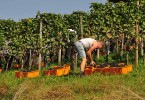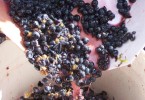Millesimo and Millesimato wine…what are they?
We often hear about Spumante Millesimato and Millesimo, but what are they actually?
We talk about “millesimo” when we mean the year of the grape harvest (from the French millésime = year); more precisely when the wine is produced with, at least, the 85% of the grapes harvested in the same year!
If there is a successful year, the winemaker can decide to not use the harvested grapes for the creation of base wines (the cuvee) but to produce a sparking wine with grapes of the same harvest. In this case, we will talk about Millesimato Wine.

The winemakers use to create these types of wines to enhance the results of a successful grape harvest that characterize the territory and the wine itself. Some winemakers, each year, address a part of the harvest to the production of this type of wine; others sell their Spumante Millesimato only in those extraordinary years.
The Millesimato and the method

When we say Millesimato wine we are talking about sparkling wines produced with the Traditional Method (secondary fermentation in the bottle). Instead, the Charmat-Martinotti method (secondary fermentation in a pressure tank) is perfect for wines produced with grapes of the same year to enhance the characteristic of its variety, its pleasant, simplicity and drinkability, typical of these wines.
This is the reason why the name Prosecco Millesimato is just a marketing strategy connected with the idea of a better quality; Prosecco IS a “millesimato” because it is harvested, produced and traded in few months. Thus, there aren’t differences between a Prosecco millesimato and a Prosecco (without the indication millesimato) talking of organoleptic characteristics and quality.
We are not calling into question the quality of a great wine as Prosecco, above all the Prosecco produced in the DOCG areas of Valdobbiadene-Conegliano and the Cartizze zone, but we think that use the word “millesimato” when there is a certain high quality wine is useless. This is a marketing strategy that can only create confusion when, instead, it is necessary to be as clear as possible to give to Italy the image that it needs!
Hoping to have been helpful, it’s high time to drink a good millesimato wine!
Raise your glass and…cheers!!







